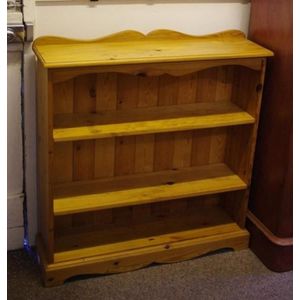Barraud Georgian Bracket Clock, London c.1810
A Georgian bracket clock by Barraud of London, c.1810, in ebonised arched top case with brass beading and bracket feet, the repeating 8-day verge twin fusee movement striking on a steel bell. Silvered dial with strike/silent in the arch, Roman numerals and railtrack minute register, engraved Barraud, London, framed by flowers and a ribbon banderole, the backplate with conforming maker's details, florals and bright cutting, gilt brass fretwork scale panels to the sides, bale carrying handle, height 43 cm including handle.
You must be a subscriber, and be logged in to view price and dealer details.
Subscribe Now to view actual auction price for this item
When you subscribe, you have the option of setting the currency in which to display prices to $Au, $US, $NZ or Stg.
This item has been sold, and the description, image and price are for reference purposes only.
- Fusee - The fusee movement was used in clocks and pocket watches from the mid 17th century. The fusee is a cone shaped drum within the works that is linked to the barrel of the spring, usually by a length of chain.
As the mainspring loses its tension over time, the cone shaped barrel compensates for this by increasing the tension, by pulling the mainspring tighter, thus ensuring the time remains constant.
Use of the fusee in clocks was superseded by the "going barrel" in the mid 19th century and for pocket watches at the beginning of the 19th century.
The fusee continued to be used in marine chronometers until the 1970s. - Georgian - As an English stylistic period, Georgian is usually taken to cover the period from George I (1714) to the Regency of Prince George (1811-20), although the period from 1800 to 1830 is sometimes designated as the Regency period. During the Georgian period the great English cabinetmakers and designers such as Chippendale, Hepplewhite, Adam Sheraton etc., were all active.
Therefore there isn't a single 'Georgian style' as such and to say something is 'Georgian', usually means it was made between 1714 and 1830. This assumes we discount George V and George VI, both being from the 20th century.
The styles popular at the time of each reign were:
George I (1714-1727) saw out the last years of the Baroque period.
George II (1727-1760) reigned during the Rococo period.
George III (1760-1820) saw the last gasp of the Rococo, all of the early Neo-Classic 'Adam style' and most of the later neo-Classic 'Regency style'.
George IV (Prince Regent 1820-1830)encompassed the last of the 'Regency' style.
William IV's reign (1830-1837) was something of a no man's land (stylistically) and he wasn't a 'George' anyway. He covered the last glimmerings of 'Regency' and the start of the 'Victorian' style. - Movement - The technical name for the workings of a clock or watch, and does not include the dial or case.
- Back Plate - On many types of clocks, the movement operates between two plates, usually made of brass, one at the back, and the other at the front, which forms a mount for the dial.
On English bracket, mantle and table clocks the backplate was often visible through a glass door or panel from the late 17th century, and could be profusely engraved with scrolling decorations, flowers, foliage, birds, and figures. The engraving could also include the maker?s name.
The amount of engraving reduced and became simpler as the 18th century progressed, and by 1800, had been reduced to a border, often with the maker's name in the centre. By the early 1800s all decoration had ceased, and only the maker's name was added, and by the Victorian era, most bracket, mantle and table clocks had no engraving.
This item has been included into following indexes:
Visually similar items

A single door Edwardian bedside cabinet
Sold by
in
for
You can display prices in $Au, $US, $NZ or Stg.

Pine bookcase, 90 cm wide, 96 cm high
Sold by
in
for
You can display prices in $Au, $US, $NZ or Stg.

A superb French sculptured brass carriage clock. 15 cm high.
Sold by
in
for
You can display prices in $Au, $US, $NZ or Stg.

Five Dinky models, including no. 279 Aveling-Barford diesel roller; no. 437 Muir Hill 2WL Loader; no. 967 Muir Hill Loader and Trencher; no. 285 Merryweather Marquis fire tender; and 295 Atlantean bus all in original boxes (E-M boxes VG) (5)
Sold by
in
for
You can display prices in $Au, $US, $NZ or Stg.
